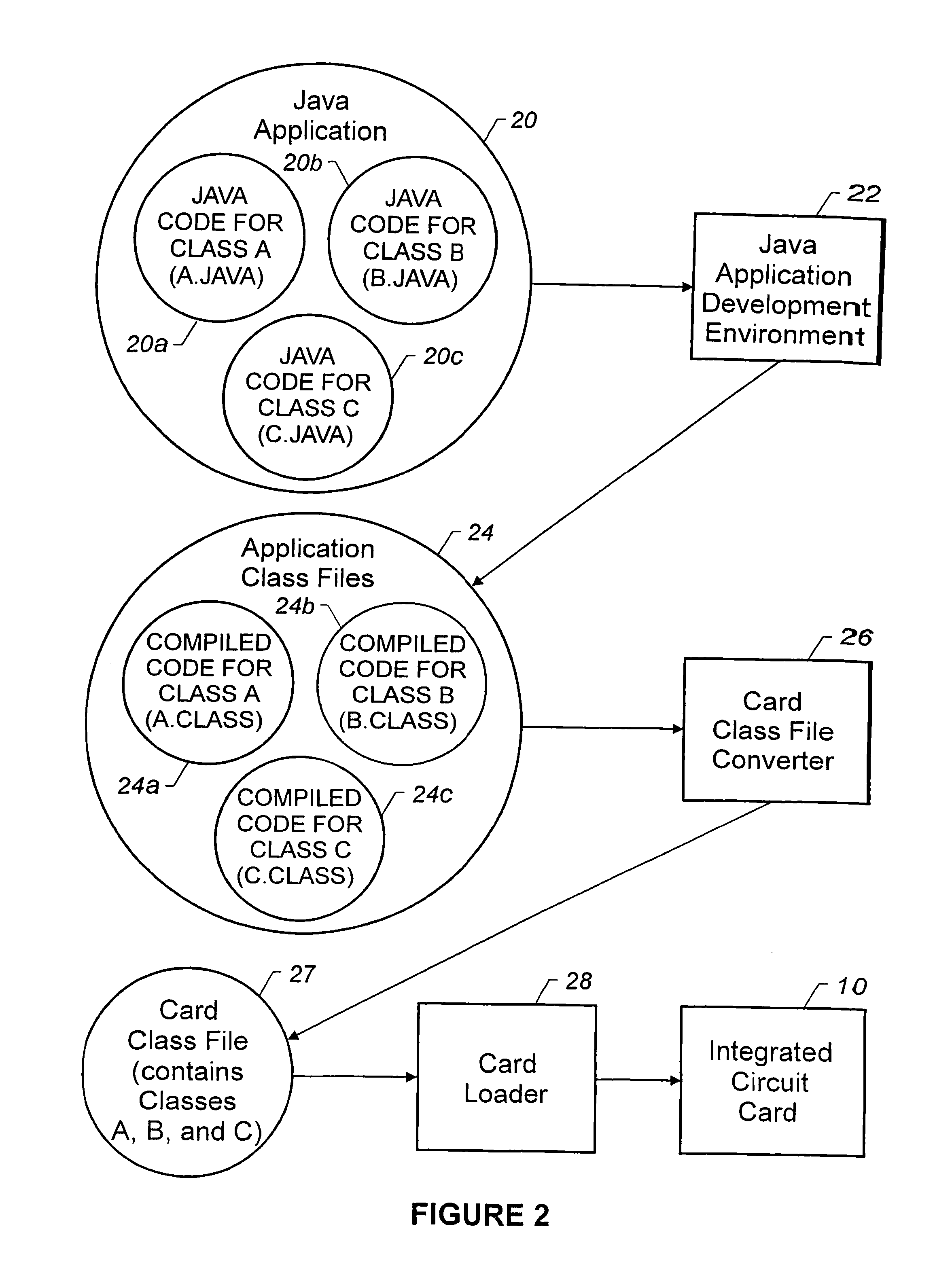Using a high level programming language with a microcontroller
a microcontroller and programming language technology, applied in the field of programming, can solve the problems of no conventional java implementation of microcontrollers, data loss in ram, and inability to write, and achieve the effects of high-level program development, rapid prototyping, and rapid prototyping
- Summary
- Abstract
- Description
- Claims
- Application Information
AI Technical Summary
Benefits of technology
Problems solved by technology
Method used
Image
Examples
Embodiment Construction
[0069]Referring to FIG. 1, an integrated circuit card 10 (e.g., a smart card) is constructed to provide a high level, Java-based, multiple application programming and execution environment. The integrated circuit card 10 has a communicator 12a that is configured to communicate with a terminal communicator 12b of a terminal 14. In some embodiments, the integrated circuit card 10 is a smart card with an 8 bit microcontroller, 512 bytes of RAM, 4K bytes of EEPROM, and 20K of ROM; the terminal communicator 12b is a conventional contact smart card reader; and the terminal 14 is a conventional personal computer running the Windows NT operating system supporting the personal computer smart card (PC / SC) standard and providing Java development support.
[0070]In some embodiments, the microcontroller, memory and communicator are embedded in a plastic card that has substantially the same dimensions as a typical credit card. In other embodiments, the microcontroller, memory and communicator are m...
PUM
 Login to View More
Login to View More Abstract
Description
Claims
Application Information
 Login to View More
Login to View More - R&D
- Intellectual Property
- Life Sciences
- Materials
- Tech Scout
- Unparalleled Data Quality
- Higher Quality Content
- 60% Fewer Hallucinations
Browse by: Latest US Patents, China's latest patents, Technical Efficacy Thesaurus, Application Domain, Technology Topic, Popular Technical Reports.
© 2025 PatSnap. All rights reserved.Legal|Privacy policy|Modern Slavery Act Transparency Statement|Sitemap|About US| Contact US: help@patsnap.com



